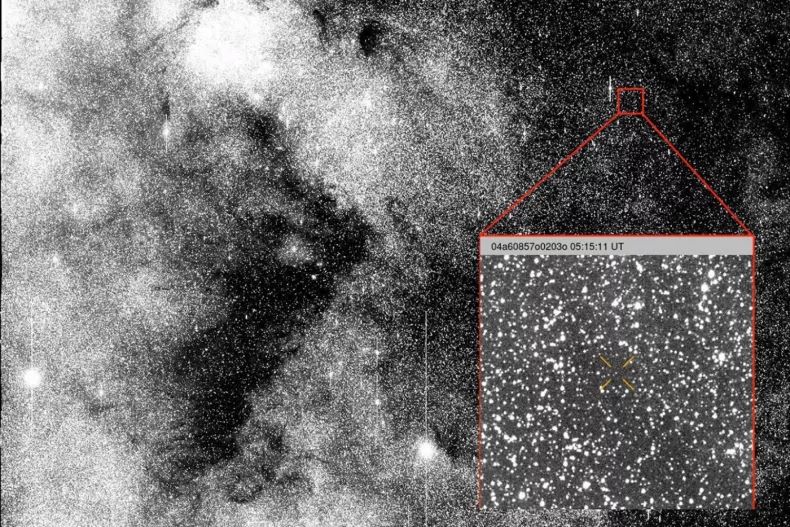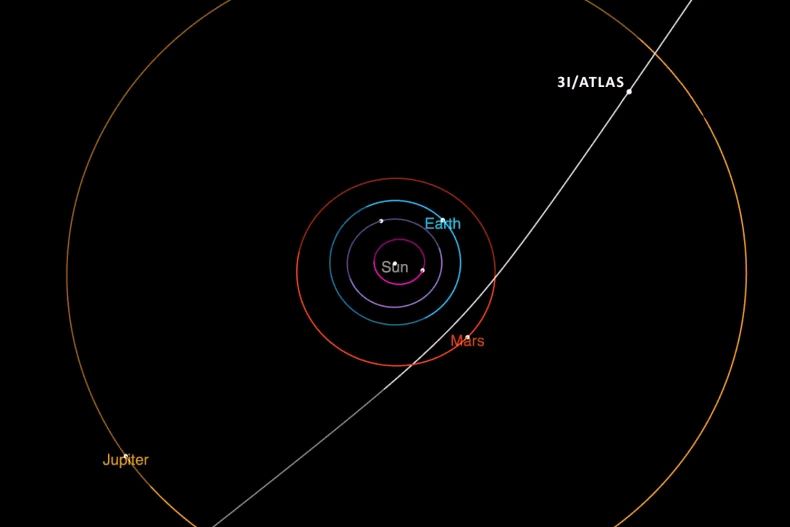Harvard astrophysicist suggests recently-discovered interstellar object may be alien probe
A newly discovered interstellar object hurtling through the solar system has reignited a cosmic controversy after Harvard Professor Avi Loeb argued it may be alien technology — possibly even a hostile probe.
While astronomers worldwide called it speculation and “nonsense,” Loeb and two researchers published a preprint paper on this topic in the journal Earth and Planetary Astrophysics.
More to read:
A new asteroid threat for Earth. From Venus
The object in question, named 3I/ATLAS, is only the third interstellar object ever detected and was first spotted by NASA’s ATLAS telescope in Chile on 1 July 2025. Officially classified as a comet, 3I/ATLAS has prompted debate not because of what it is — but what it might be.
Loeb and his colleagues do not insist their theory is true but question whether 3I/ATLAS could be “possibly hostile” alien technology sent by an advanced civilization. The paper, described as a “pedagogical exercise”, lays out circumstantial anomalies that Loeb believes warrant attention.

A photopicture of the comet 3I/ATLAS on 1 July 2025. Credit: NASA
If it’s true, the object may turn hostile in November, he warned without elaborating.
“The retrograde orbital plane of 3I/ATLAS around the Sun lies within 5 degrees of that of Earth... The likelihood for that coincidence out of all random orientations is 0.2 percent,” Loeb said in a blog post.
“It might have targeted the inner Solar System as expected from alien technology” while making its closes approach to Earth in December, the scientist said.
More to read:
What is the connection between a comet and human stupidity?
Here are Loeb’s Arguments:
- Suspicious orbit: The object has a retrograde trajectory unusually aligned with Earth’s orbital plane — an alignment Loeb calculates has just a 0.2% probability of happening by chance.
“The consequences, should the hypothesis turn out to be correct, could potentially be dire for humanity,” Loeb warned. “We better be ready for both options and check whether all interstellar objects are rocks.”

A diagram showing the trajectory of interstellar comet 3I/ATLAS as it passes through the solar system. Credit: CalTech/NASA
However, Loeb’s opponents have counter-arguments to explain the nature of 3I/ATLAS:
• No evidence of alien origin:
“There have been no signs pointing to non-natural origins of 3I/ATLAS in the available observations,” said Richard Moissl, Head of Planetary Defence at the European Space Agency.
• Displays typical comet behavior:
“There have been numerous telescopic observations... demonstrating classical signatures of cometary activity,” said astronomer Darryl Seligman.
• Claims distract from science:
“Any suggestion that it’s artificial is nonsense on stilts,” according to Chris Lintott of Oxford University. “It’s an insult to the exciting work going on to understand this object.”
• Premature judgments:
“The object is still far from the Sun... we wouldn’t typically expect to find direct evidence of volatiles yet,” noted Seligman.
• Lack of extraordinary evidence:
“Extraordinary claims require extraordinary evidence, and the evidence presented is absolutely not extraordinary,” noted Samantha Lawler of the University of Regina.
More to read:
Scientists reveal the ancestry of 90% of meteorites hitting Earth
Importantly, there are no detected technosignatures, unusual acceleration, artificial materials, or communication signals.
Despite widespread criticism, Loeb remains firm, describing his hypothesis as an “interesting exercise” worth exploring — even if it’s unlikely to be correct.
“By far, the most likely outcome will be that 3I/ATLAS is a completely natural interstellar object, probably a comet,” he conceded in his blog post, adding it’s still worth exploring the alien theory.
More to read:
[video] Something hit Uranus so hard that it changed rotation axis
As 3I/ATLAS continues its journey through the inner solar system, astronomers are racing to gather data before it vanishes back into the cosmic dark — natural or not. Until further spectroscopic data or unusual physical behavior is observed, the natural comet hypothesis remains the most plausible explanation.
The alien probe scenario, while fascinating and not entirely dismissible, is speculative and unproven at this stage.
Avi Loeb is the head of the Galileo Project, founding director of Harvard University’s — Black Hole Initiative, director of the Institute for Theory and Computation at the Harvard-Smithsonian Center for Astrophysics.







